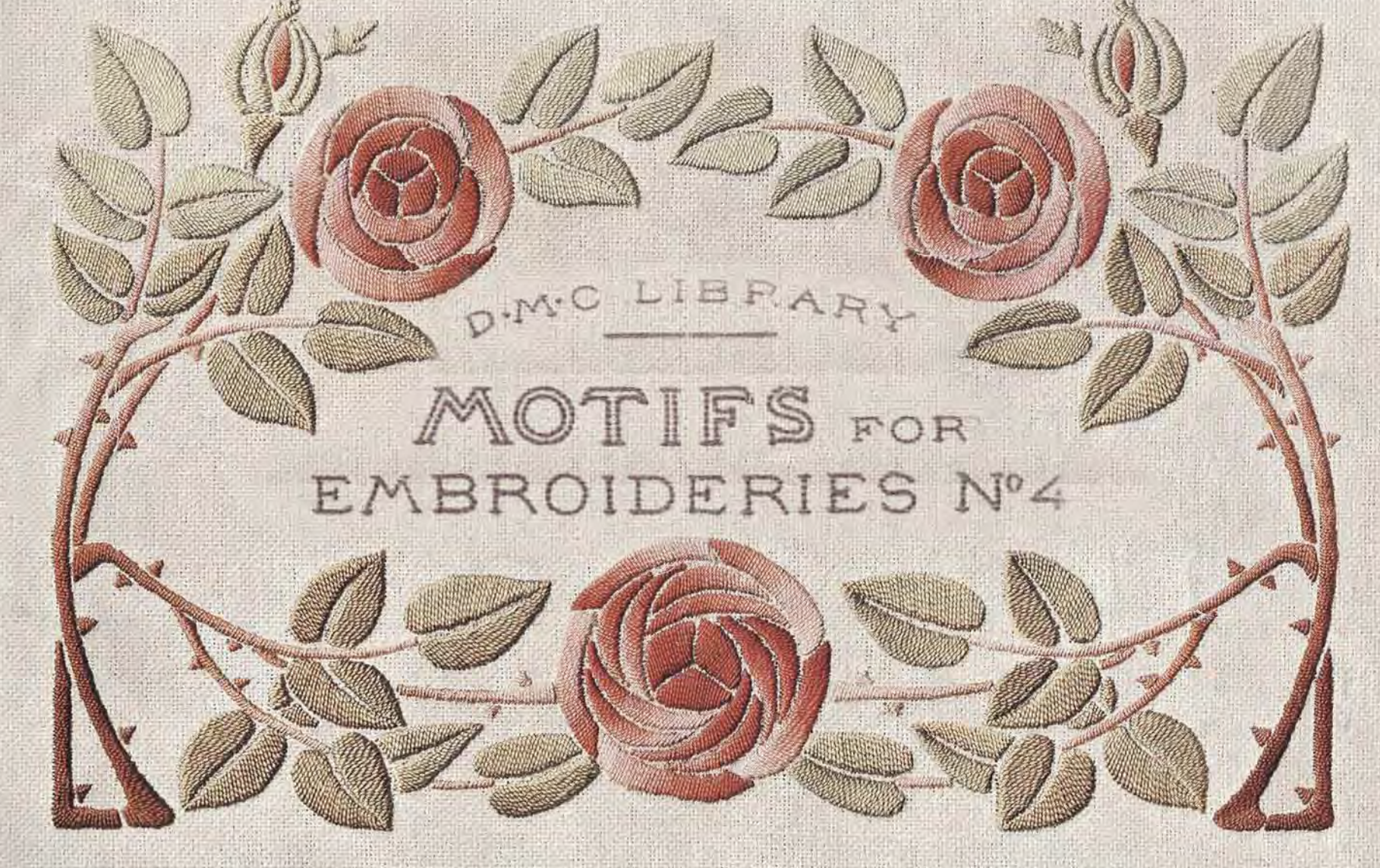Design Process – An 18th C. Petticoat
I’m working on a design for this 18th c. quilted petticoat today, and thinking about all the steps that go into creating the files for a piece like this. It takes a mix of creativity, judgement calls, research, guesswork, and a LOT of squinting.
The original petticoat is gorgeous. Scallops along the hem each hold a different stylized flower. Above that, you have scrolling vines that give way near the top to deep scallops with a flower at each peak. It’s relatively simple, without complex fills or other quilting techniques that could make a machine copy more challenging. It’s not the easiest quilted petticoat I could tackle, but it’s far from the most difficult. From the MFA. 
There are only two images, both of which have their pros and cons. The color version, above, has some nice contrast, but shows less detail as you zoom in. Also, it’s on a display form, so the folds in the petticoat obscure large sections of the design. The black and white photo, below, is helpful because it’s laid out as flat as possible, but is a little harder on my eyes. And there is no back view of the petticoat at all. 
Here’s a screenshot of the artwork in progress. It’s a balancing act between staying true to the design, drawing something pleasing to the eye, and making sure it will all fit together neatly at the end. Zooming in helps, but only up to a point. After that, it’s just too blurry to be useful. 
I started with the center design that was shown more or less straight on, with the least amount of curve. After figuring out a shape and size of scallop, I can continue that towards the edges. It’s not a perfect match as you continue onwards, but that’s partly due to the nature of hand work, and partly due to the curve of the skirt. It’s close enough for this stage, however, and keeping the scallops consistent means it will match up at the end.
Then there are the artistic judgement calls that I need to make. The center leaf on the left in this image is flipped on the original, but doesn’t seem to follow that pattern around the rest of the petticoat. But it’s really hard to tell in the image, because the next leaf that might be flipped is on a fold of fabric. Flip it or not? Tweak every other repeat so it looks more hand made? For this step it’s easiest to just copy and paste, but I will probably tweak these areas in the final design.
The flower in the middle, with the heart at the top – it’s not symmetrical at all. The areas on the right look narrower, and not just due to perspective along the curve. Will that look handmade or simply messy if I follow the original lines? In this case, it just looked messy, so I made it more symmetrical.
Repeat for the rest of the petticoat. Is it stitching or a wrinkle? Which awkward curves do you leave true to the original, and which do you clean up? I always try to find the balance of slightly imperfect so it looks handmade, but not so imperfect that it looks sloppy.
I can see 6 different motifs along the front, so my design will have 6 motifs, as well. I could cut corners and just do 1 or 2 motifs, but for me, that defeats the purpose of copying an original design.
It’s possible the back of the petticoat has 6 completely different motifs, but there’s no way to tell. I could probably pay to get more photos from the museum, but that would add to the expense of the final design. It would also be potentially overwhelming for the end user to have 12 motifs instead of 6, so it seems best to just work with what I can see. 
Once the 6 scalloped repeats are complete, I’ll make sure they scale to the same size as the original (I love this feature of vector art!) and that they match up neatly. I’ll make sure they all line up along a straight line, and tweak the scallops to be an even size, so that you can mark your fabric easily.
I’ve placed the joins at the top of the scallop, below the leaves, and at the side of the scallop (inside the red circles, above). These points minimize the perfection needed to match up each motif. Even if you’re off a little bit, it should be barely visible in the final petticoat.
As I work my way up the petticoat, things will get even more difficult because of the pleats. The band of scrolling flowers will definitely involve guesswork. I’ll use what I can see, and fill in the rest to match up with the first 6 motifs at the hem.
The upper scallops should be easier, since they fit a predictable pattern. They need to be an appropriate scale, and they need to repeat inside the same width as the rows below. The top of the petticoat has some blank space that should allow for alterations in length without interrupting the pattern.
Once I have all the motifs, I’ll digitize them using a single path of thread with as few jumps as possible. This is a puzzle in and of itself, but thankfully, it’s a challenge I enjoy.

A quick test run of one motif shows what it looks like when stitched out. For this sample, I used silk charmeuse, cotton batting, and a backing of Kona cotton. All layers were hooped and then quilted with the embroidery design, using silk thread to match. I really love the way it looks, and look forward to creating the full petticoat.
For the first motif, which including figuring out the scallop that I’ll continue to use throughout, the artwork took about an hour, digitizing took 20 mins, and two repeats stitched out in 15 mins. Which means once all the pieces are done, it could be entirely possible to quilt a petticoat in a weekend.
I’ll do at least one full sample, to make sure it works and so I can take photos. As always, I will also send it off to pattern testers to make sure it works in the real world on a variety of machines. Once I’m sure it works consistently, then I’ll polish up the PDF instructions and put it online.
This is definitely going to be an advanced design, with 10-12 pieces at a minimum. My rough calculations right now suggest that the lower scallops are roughly 6″ x 6″, which means you need a fairly large hoop size to stitch them out. I’ll either have to break up the design into even more pieces, which means more match points, only issue it for a larger hoop, or issue it in the original size for large hoops and a second size scaled down to fit smaller hoops.
The end user will need to be comfortable creating a grid on their fashion fabric, then hooping and stitching the designs within that grid. The PDF download that comes with the design files will include an embroidery layout, embroidery instructions, and sewing instructions for completing the petticoat. I’m also planning to offer an online class for this design, because I fully realize that a PDF may not be enough instruction for many people.
So there you go – everything that goes into tackling a larger design like this and making sure it works for the end user.

 Next Post
Next Post

This truly shows how much work goes into each product! Can’t wait to try it!
Since you’re recreating the design for sale, would you need to get any sort of permission from the museum?
Thank you! I would love to see your example if you make one.
The museum lists the petticoat as public domain, however, the museum photos are under copyright. So I don’t need permission to reproduce the design of the quilting itself, but would need to license museum photos if I wanted to use them as cover art, etc. I wish I could afford museum photos for all my designs, as that’s such a good original resource and I believe it adds value. For now I just link to them, since the licensing fees get steep. I love museums like the Met and LACMA that have public domain images that may be used commercially. I’ll use museum photos in an educational post like this one, but not in my actual products.